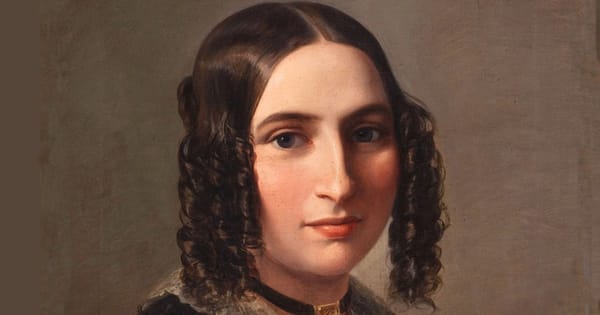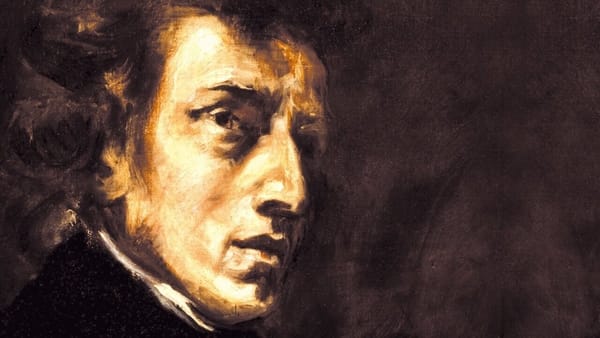The Eternal Sound of Music

In moments of social confinement, art, once again, is man’s companion, like it has been in war and peace, sickness and health. By Snigdha Hasan
It is the fifth month of the year, and in a parallel, Corona-free world, the Baltimore Symphony Orchestra would have been neck-deep in rehearsal for the All Together Global Ode to Joy concert series, one of the many year-round events on the packed calendar of Carnegie Hall to celebrate Beethoven’s 250 years. Under the baton of Marin Alsop, 10 partner orchestras across six continents were to play the Ninth Symphony, and as part of each performance, the jewel of the symphonic crown, the Ode to Joy, was to be translated into a local language. The idea was to reimagine the work as a 21st-century call for unity, justice and empowerment, much like what the composer had in mind when he incorporated Friedrich Schiller’s poem into his last symphony. The concert, like countless other Beethoven tribute events the world over, still has a digital footprint, affixed with a spirit-dampening “Cancelled”. But if this was a clarion call for unity, when did the world need it more in the recent times than now? As balconies take on a new meaning, lone musicians playing their instruments in them turn to the Ode to Joy and other classical reservoirs of strength to relay the message of hope the world is so desperate to cling on to.
The new-age cultural diet of Skype concerts, YouTube broadcasts and Instagram Live streams has somewhat helped cushion the blow of the pandemic that prevents us from being social. What, however, is not novel is the role that art has played in the face of adversity despite being sacrificed at the altar of its very exigencies. Outlining the exhaustive history of this role is beyond the scope of this article, as is any attempt to cover all facets of the visual and performing arts in this pursuit. What the article does set out to do is recall some events from 20th-century world history, including a few from the Indian subcontinent during the same period, to look at how art – in this case, largely but not only music – responded to them.
An equal music
A good starting point could perhaps be the introduction of Beethoven’s Ninth to Japan amidst World War I hostilities. At Bando, a camp in the Ibaraki prefecture where German soldiers had been taken prisoners of war, the composer’s works were evoked regularly in the trying, seemingly endless circumstances. When the war was finally over, the soldiers continued to languish in Japan for almost a year until ships from the fatherland came to fetch them. This is when they performed the symphony outside the camp for the first time in a country where Western classical music was still fairly new. The listeners were enthralled. A century later, performing the Daiku (Big Nine), as it is called in Japan, especially during year-end and New Year’s Eve, remains a cherished tradition.
The dramatic unfolding of events after the assassination of Archduke Franz Ferdinand aside, the year 1914, in the world of theatre, is known for an unusual premiere. When avant-garde director-producer Aleksandr Jakovlevich Tairov founded the Kamerny (Chamber) Theatre in Moscow, he decided to open it with a production of Kalidasa’s Sakuntala. In a world increasingly gripped by violence and destruction, Tairov’s message through his choice of play, which was as much an ode to nature as to human emotions, was clear: in life, seek beauty and shun what’s ugly.
Twenty-five years later, when war reared its ugly head again, a parallel development enabling electronic mass distribution of music for the first time meant, as Annegret Fauser writes in Sounds of War: Music in the United States during World War II (Oxford University Press; 2013), “Whether as an instrument of blatant propaganda or as a means of entertainment, recuperation, and uplift, music pervaded homes and concert halls, army camps and government buildings, hospitals and factories. A medium both permeable and malleable, music was appropriated for numerous war-related tasks. Indeed, even more than movies, posters, books, and newspapers, music sounded everywhere in this war, not only in its live manifestations but also through recording and radio.”
Music served a similar purpose in other countries, but the sorrows of war ran too deep to be obscured by upbeat songs stoking patriotic fervour among civilians and men on the front line alike. The Soviet Union, having lost 20 million of its men in World War II, grieved through songs that mourned the death of soldiers in a foreign land who then rose as cranes in the sky (‘Zhuravli’/‘Cranes’), spoke of post-war trauma that a soldier endures when thunder sounds like nothing but gunfire to him (‘Ya Segodnya do Zarivstanu’/‘I Will Wake up Before Dawn Today’), and yearned for lasting peace through the painting of a young boy who wishes for ‘Pust Vsegda Budet Solntse’/‘Let There Always be Sunshine’ with his bright sun against a clear blue sky.
Jazz deserves a separate chapter in the documentation of war music. Much loved in America, it slowly moved up the ranks in Britain as the BBC reluctantly began to give more airtime to dance music. Listening to jazz in Germany had to be a fairly discreet act, for Hitler’s hatred of the genre was rather well known. Culture, what ought to be included in it – and excluded from it – was a prime Nazi concern. The purging of Jewish musicians from German orchestras is a painful war memory soothed only by stories of forgiveness like that of Hellmut Stern’s. The renowned violinist who was forced to flee Germany as a child, returned to his hometown after decades in exile to join the Berlin Philharmonic. In what can be called the ultimate act of reconciliation, Stern spearheaded the orchestra’s tour of Israel in 1990, where the ensemble joined hands with the Israel Philharmonic Orchestra to perform a string of concerts conducted by Zubin Mehta. Stern passed away on March 21 this year.
Creative forces
Closer home, India’s freedom movement was deeply enmeshed with the cultural awakening of its people, brought about by the numerous poems and songs that political leaders, activists, writers and artistes wrote and composed. Bankim Chandra Chatterjee’s ‘Vande Mataram’ (1882) was among the first such compositions that galvanised large numbers from all walks of life. This included musicians who came forward to record this praise to the motherland, starting with Rabindranath Tagore’s own rendition, followed by Vishnu Digambar Paluskar’s version in Raga Kafi and a duet by M.S. Subbulakshmi and D.K. Roy. By 1931, India had produced Alam Ara, its first talkie film, and soon enough, its cinematic output began to reflect the socio-political upheaval of the time. Lyricists were employed to write songs, often with thinly veiled references to India’s impending freedom, which played a role in feeding the national consciousness.
The formation of theatre groups such as the Indian People’s Theatre Association (IPTA) in 1943 – the “People’s Theatre” part of the name was suggested by Homi Jehangir Bhabha – further strengthened this awakening by promoting themes related to India’s struggle for freedom. As a newly independent nation, India was eventually mired in a complex web of problems and with members including Balraj Sahni, Prithviraj Kapoor, Ritwik Ghatak and K.A. Abbas, IPTA continued to grapple with them on stage and on screen. It was joined in its efforts by Jana Natya Manch (Janam) in 1973, a group founded by Delhi’s radical theatre amateurs, who sought to take theatre to the people and engage them through plays on price rise, elections, communalism, unemployment, trade union rights, etc. Few filmmakers today hire lyricists to pen songs about India’s freedom from this ever-evolving set of problems – a role that IPTA, Janam and other theatre groups have steadfastly held on to.
When patriotic fervour had begun to give way to a new normal in the country, songs of freedom rose once again, this time in India’s eastern neighbourhood, where culture over religion became the raison d’être of Bangladesh. Any reference to the Liberation War of 1971 is incomplete without dwelling on the songs of Tagore and Kazi Nazrul Islam that stoked the spirits of not just the Mukti Bahini but that of the common man too. In their bid to stifle dissent, the Opposition Forces banned Nazrul’s ‘Karar Oi Louho Kapat’. Months later, it was chosen as the first song to be broadcast from the Swadhin Bangla Betar Kendra (Free Bengal Radio Centre). Tagore’s ‘Amar Sonar Bangla’ came to be the national anthem of Bangladesh.
What a set of forces found blasphemous in a composition became the symbol of the birth of a nation. But that’s perhaps what music has always been. A force so strong, it transcends the reasons for its creation. From the confines of home, a virus-stricken world has imbued a 100-year-old aria in Puccini’s Turandot with a new meaning, while Beethoven’s Ninth is still being hummed as planned, albeit in sombre settings.
This piece was originally published by the National Centre for the Performing Arts, Mumbai, in the May 2020 issue of ON Stage – their monthly arts magazine.





